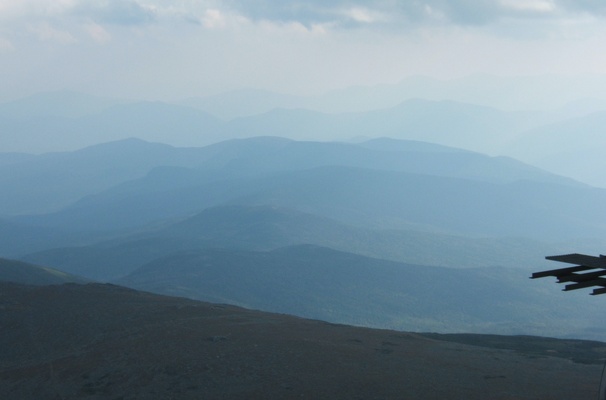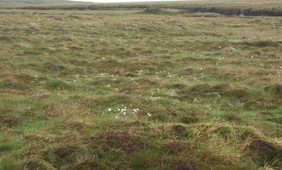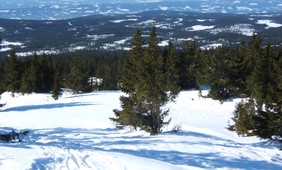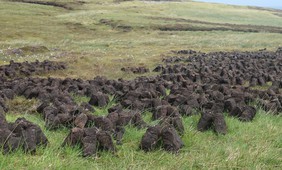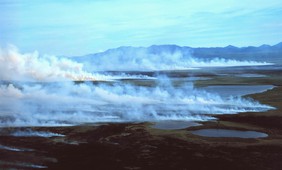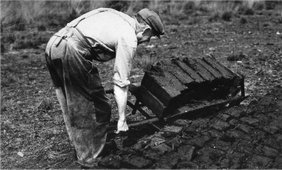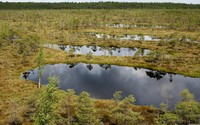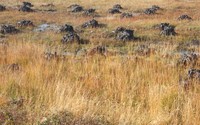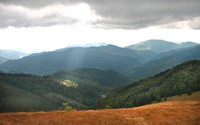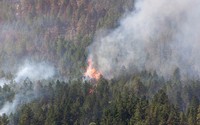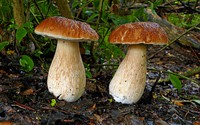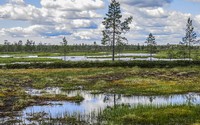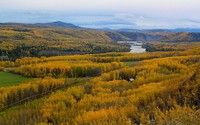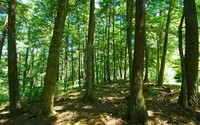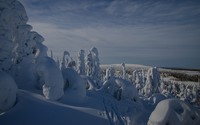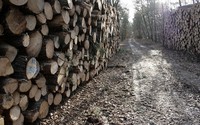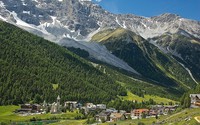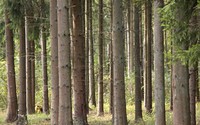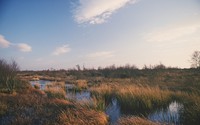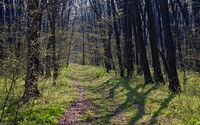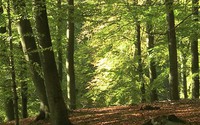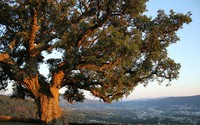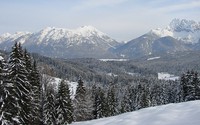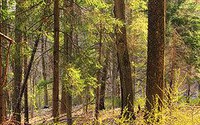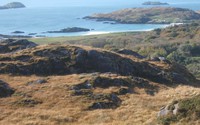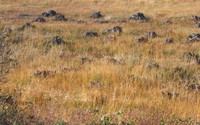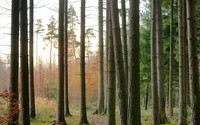Forestry and peatlands
Services European forests provide to society will decline, no matter what
Climate change outpaces the abilities of tree species to migrate north. Forest ecosystem services, including recreation and providing food, medicine and wood for construction, will decline.
Rewetting our peatlands not only serves the climate
Drained peatlands make up only 3% of the agricultural land in the European Union but emit 25% of the total agricultural greenhouse gas emissions. The advantages of rewetting them are manifold.
Read more »What may happen to forestry and timber markets beyond 2100?
Global forest area is likely to increase this century, but shrink back towards its present level by 2200. Forest productivity and timber supply will continue to increase through 2200, however.
Read more »For peat’s sake! Scotland restores its peatlands to keep carbon locked up
More then half a century ago, the Scots tried to transform their bogs into forest, now they’ve made a 180 degrees turn. Scotland has emerged as a global leader in restoring peatlands.
Read more »Thawing Arctic permafrost may have unexpected and far-reaching impacts
When permafrost thaws deeper into the soil, soil moisture can change rapidly. The wide range of effects includes less stable infrastructure, changing flood risk, and higher wildfire risk.
Read more »Peatlands, a growing net source of greenhouse gasses since 1960
Drainage of peatlands has transformed large areas from former sinks into net sources of greenhouse gasses. Most of these peatlands need to be rehabilitated to stop global warming at +2 °C.
Read more »It may take several decades for rewetted agricultural peat soils to show climatic benefits
Rewetting peat soils increases both the accumulation of CO2 and the emission of CH4, a much stronger but short-lived greenhouse gas. It takes time for CO2 storage to dominate over the CH4 effect.
Read more »After 2100, decomposition of peatlands will strengthen climate change
Good news: until 2100, more carbon will be stored in peatlands globally. Bad news: this will not persist in time. After 2100, carbon loss from peatlands will strengthen climate change.
Read more »Shift of tree species composition European forests reinforces global warming
Global warming will change the tree species composition of European forests towards trees that store less carbon. This may turn these forests into a carbon source and thus reinforce global warming.
Read more »Shift in boreal forest tree species urgently needed due to climate change
A new strategy is urgently needed for boreal forests focused on the replacement of needle-leaved tree species by broad-leaved species. This would reduce fire risk and cool the boreal zone.
Read more »Surprisingly, climate change may increase mushroom productivity in Mediterranean forests
Unexpectedly, mushroom productivity the Mediterranean may increase towards 2100. The fruiting season may last longer due to more precipitation at the beginning and warmer weather at the end.
Read more »Cultivated peat soils lead to land subsidence and emit greenhouse gases. How can we avoid this?
Peat soils are responsible for a significant portion of the anthropogenic CO2 and N2O emissions. Besides, drained organic soils subside due to compaction, shrinkage, erosion and oxidation.
Read more »What drives future changes in the world’s forest carbon?
Climate change stimulates global forest carbon due to the fertilization effect of CO2. Not necessarily due to global warming itself: that has negative effects, such as more wildfires and droughts.
Read more »More than carbon storage - The role of forests in climate change
Their impacts on water supplies and climate cooling are the principal contribution of trees to climate change mitigation and adaptation, scientists state. Carbon storage is ‘just’ a co-benefit.
Read more »Warmer winters increase forest damage by snow loads in coldest parts of Europe
In the coldest parts of Europe snow-induced forest damage may increase when winters get warmer. This is due to changing characteristics of the snow load on tree crowns.
Read more »More woods in the Netherlands to tackle global warming
A plan put forward by several Dutch organisations and companies is to afforest 100,000 acres of land in the Netherlands in the next 30 years. The purpose of this plan: more trees capture more carbon.
Read more »Organic matter losses in German Alps forest soils since the 1970s most likely caused by warming
The past three decades, soil organic carbon stocks in German Alps forests have decreased. This is likely due to accelerated microbial organic carbon decomposition with increasing soil temperature.
Read more »How to manage a forest under climate and global change
Presented by Victor Blanco (University of Edinburgh, UK) at the Adaptation Futures Conference in Rotterdam, The Netherlands, May 2016
Read more »Blanket peat erosion across Great Britain under climate change
Blanket peat erosion not only results from human action, climate also affects the stability of the peat and associated erosion.
Read more »Harvesting: opportunities to adapt Romanian forests to climate change
A study for Romanian forests showed that harvesting (shorter rotations and more intense thinnings) can be seen as a chance to undergo active adaptation with respect to species composition
Read more »Forest management cannot keep pace with climate change impact on European forest
The results of a European-wide study show that forest management cannot keep pace with the projected change in species suitability under climate change.
Read more »Managing cork oak production under climate change in Portugal
If current management of oak forests is maintained, climate change may result in 20% decrease in cork production in 2100. Adapted management strategies include reducing debarking intensity
Read more »Timber production and forest protection against avalanches, rock fall and landslides in Austria under climate change
The impact of climate change between now and 2100 on timber production and protection against landslides and avalanche release, has been evaluated for the Province of Vorarlberg in Austria
Read more »Norway spruce adapt to climate change in European Alps
For Norway spruce in the Northern Limestone Alps (Germany and Austria), neither growth suppression at the lower elevation sites nor growth increase at higher elevation sites was observed
Read more »Climate change impact on European beech forest
Net primary productivity of beech decreases by 30% in 2071− 2100 compared with 1961−1990 due to higher mortality rates, lower water availability and higher drought stress.
Read more »Projected loss of active blanket bogs in Ireland
Climate change could have major implications for the lowland blanket bog distribution along especially the western Atlantic seaboard where the projected losses are greatest.
Read more »Climate change impact on peatlands in France
The hydrology of the peat layer and extent of this peat area are impacted by drainage for agriculture, groundwater abstractions in underlying aquifers and climate change.
Read more »Norway spruce forests in Finland under climate change
During 2000–2030, the primary production and net carbon sequestration of Norway spruce are estimated to increase in southern Finland ...
Read more »
